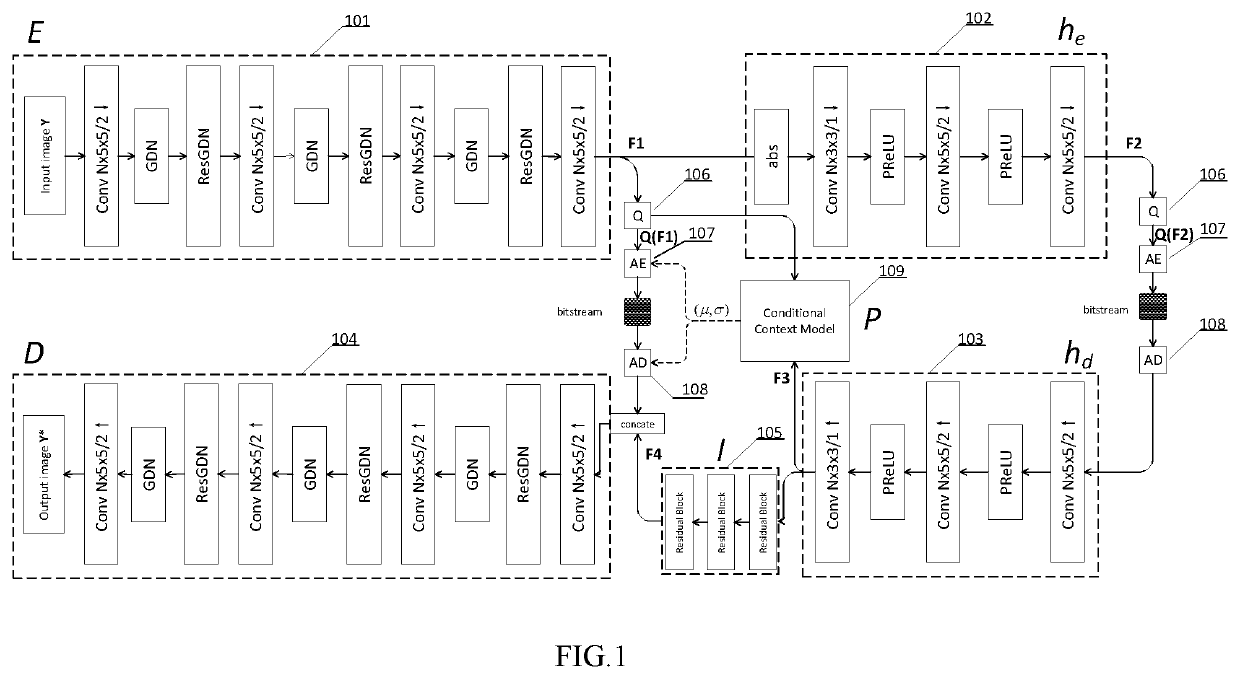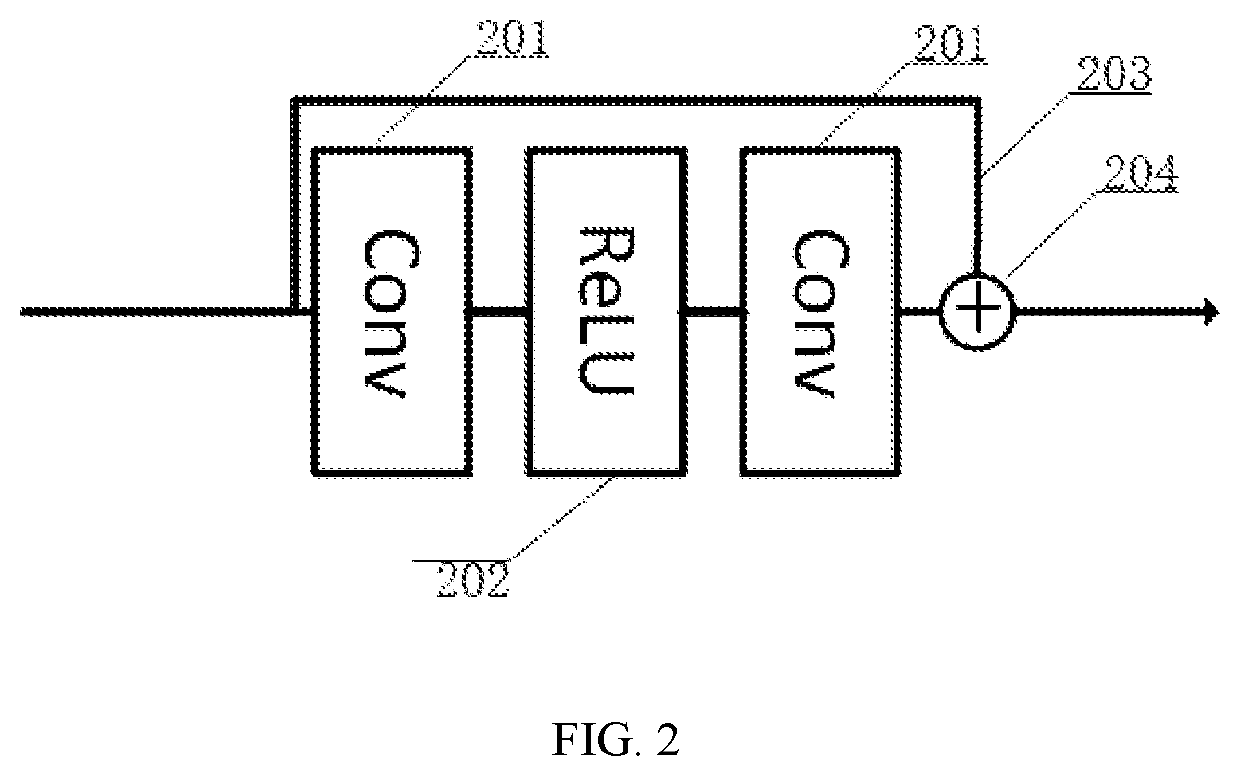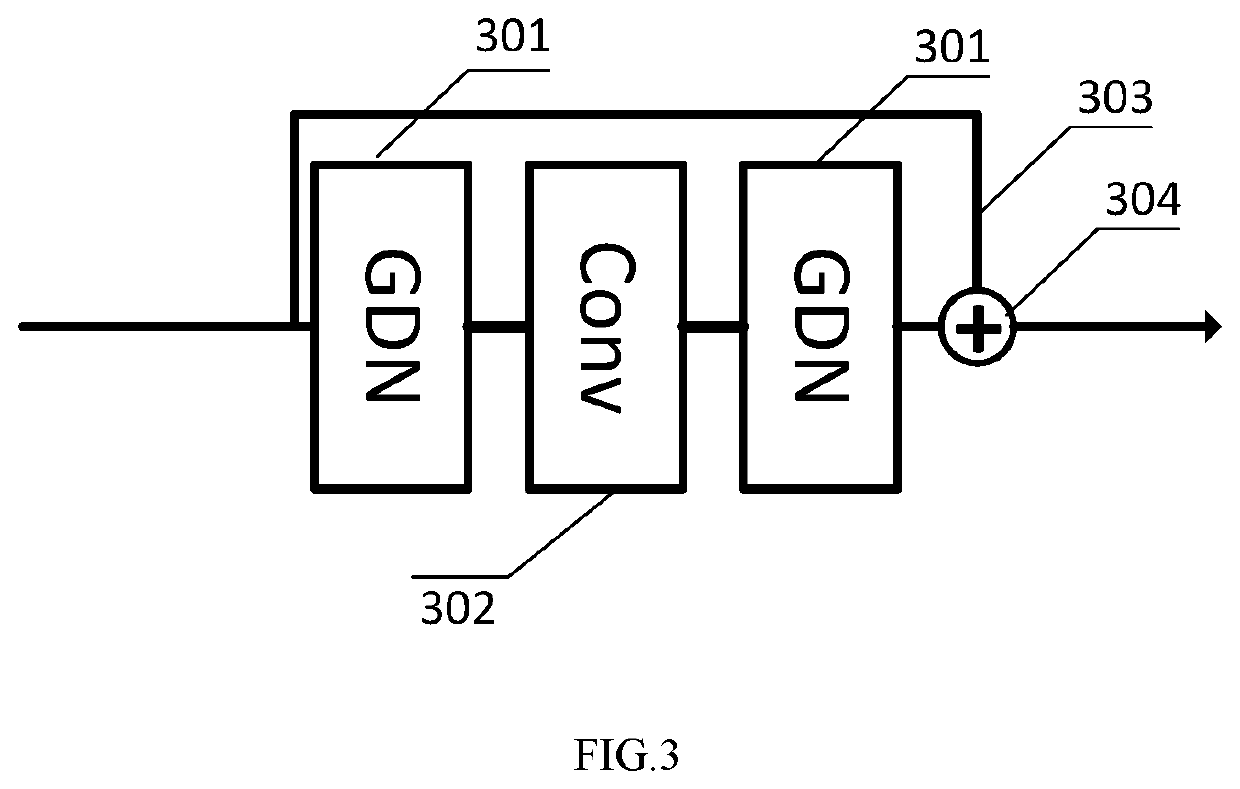Methods And Apparatuses For Learned Image Compression
a learning image and compression technology, applied in the field of learning image compression, can solve the problems of inability to leverage the frequency selectivity of the human visual system (hvs) to reduce the image redundancy, the statistical redundancy of quantized features maps cannot be removed, and the regular convolution may fail in learning. to achieve the effect of minimizing the rate-distortion loss and removing the statistical redundancy of quantized features maps
- Summary
- Abstract
- Description
- Claims
- Application Information
AI Technical Summary
Benefits of technology
Problems solved by technology
Method used
Image
Examples
Embodiment Construction
[0027]FIG. 1 illustrates an embodiment of the learned image compression system and process. For encoding, the learned image compression system first provides input image Y to the Main Encoder Network 101 (E) to generate the down-scaled feature maps F1. F1 is provided to the Hyper Encoder Network 102 (he) to generate more compact feature maps F2. Stacked deep neural networks (DNNs) utilizing serial convolutions and nonlinear activation are used in both 101 and 102. Non-linear activation functions, such as ReLU (rectified linear unit), PReLU, GDN and ResGDN, map each input pixel to an output. In FIG. 1, GDN and ResGDN are applied in Main Encoder Network 101 and PReLU is used in Hyper Encoder Network 102. Notably, Generalized Divisive Normalization (GDN) based nonlinear transform better preserves the visual sensitive components as compared to other aforementioned nonlinear activations. Thus, GDN can be used to replace or supplement traditional ReLU functions embedded in deep neural net...
PUM
 Login to View More
Login to View More Abstract
Description
Claims
Application Information
 Login to View More
Login to View More - R&D
- Intellectual Property
- Life Sciences
- Materials
- Tech Scout
- Unparalleled Data Quality
- Higher Quality Content
- 60% Fewer Hallucinations
Browse by: Latest US Patents, China's latest patents, Technical Efficacy Thesaurus, Application Domain, Technology Topic, Popular Technical Reports.
© 2025 PatSnap. All rights reserved.Legal|Privacy policy|Modern Slavery Act Transparency Statement|Sitemap|About US| Contact US: help@patsnap.com



